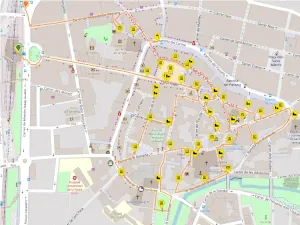
Vic Town Centre Walking Guide: Plaça Major & Historic Sites
Explore Vic’s medieval town centre on foot. Visit Plaça Major, Roman ruins, Baroque houses, and iconic buildings on a scenic walking route from Barcelona
Discover Plaça Major de Vic and the Historic Town Centre
Plaça Major de Vic is the beating heart of the historic town centre of Vic, Catalonia. This vast arcaded square has hosted markets since the 9th century and remains a vibrant hub of local life today. Surrounded by medieval and modernist buildings, it’s the perfect starting point for a walking route through Vic’s historic centre.
From Roman ruins and Baroque manor houses to modernist architecture and public art installations, Vic offers a rich tapestry of Catalan history and culture. Whether you're planning a day trip to Vic from Barcelona or exploring the region more deeply, this guide highlights the most iconic buildings and squares you’ll encounter on foot.
Image Gallery For Vic Medieval Town Centre Walking Route
Click on any of the 90 images to open full screen gallery player. Note that viewing images is subject to our Fair Use Policy.
Visiting Vic: What to See on a Historic Walking Route
The walking route through Vic’s medieval town centre takes approximately 60 to 90 minutes, not including time spent visiting museums or churches. Here are some of the most notable stops:
- Plaça Major: The central square where the weekly market is held every Tuesday and Saturday. Look for the El Merma capgrosso statue and admire the arcaded facades.
- Casa Comella: A stately home built in 1896 by Cayetano Buigas, also known for the Columbus Monument in Barcelona.
- Casa Costa: A modernist building with sculptures of working-class figures on its façade, built between 1905–1907.
- Ayuntamiento & Clock Tower: Vic’s town hall, dating from the 14th century, also houses the Vic Tourist Information Centre.
- Casa Cortada: A 16th-century Baroque manor with preserved murals by Francesc Pla.
- Seminary & Sant Just Church: Former school of notable Catalan figures like Jaime Balmes and Jacint Verdaguer.
- Casa Galadies: A 12th–13th century manor house damaged during the Spanish Civil War.
- Plaça Gaudí & La Vella més Vella Statue: A bronze capgrosso figure by Manel Casserras i Solé, symbolising Vic’s Festa Major traditions.
- Queralt Bridge: An 11th-century toll bridge over the river Mèder, partially destroyed during the Spanish Civil War and later rebuilt.
- Vic Tannery Buildings: Historic leather production sites now being restored as museum spaces.
- Hospital de la Santa Creu: A 16th-century hospital built for travellers and the poor, located near the old city gates.
- Church and Convent of Sant Domènec: Now home to Vic’s Art and Design College.
- Casa del Baró de la Blava: An 18th-century Baroque building with a humorous sculpted figure on its corner beam.
- Casa Ricart: A 19th-century modernist house now used for private events.
- Casa Masferrer: A literary and architectural landmark with stained glass and seasonal sculptures.
- Roman Temple & Montcada Castle Remains: The only surviving Roman structure in Vic.
- Els Dolors Church: A Baroque church rebuilt after being burned during the Spanish Civil War.
- La Pietat Church: Located on a historically significant square that once divided episcopal and count-controlled Vic.
- El Call (Jewish Quarter): A small but historically important area with a synagogue and school.
- Casa Bojons: A Baroque house now a museum dedicated to philosopher Jaime Balmes.
- L’Estudiant de Vic Statue: Celebrates Vic’s legacy as a centre of higher learning.
What to Bring for Your Vic Town Centre Walking Route
For a comfortable and enjoyable walk through the historic town centre of Vic, it’s best to pack light. A small 10L rucksack is ideal for carrying essentials like a fleece jersey and a waterproof poncho if rain is forecast. These day trip packing tips for Vic will keep you prepared for changing weather and long stretches of walking.
Wear comfortable walking shoes, as the route includes cobbled streets, gentle slopes, and occasional steps—especially at sites like the Roman Temple, which is only accessible via stairs.
If you plan to visit museums such as the Museu Episcopal de Vic, consider bringing headphones to use with audio guide apps. Some venues may also require you to leave large bags in a cloakroom for security reasons.
Respectful attire is recommended when entering churches or religious sites. Avoid wearing hats indoors and steer clear of revealing clothing such as miniskirts or sheer garments. These what to wear in Vic Spain
Vic Medieval Town Centre Walking Route Summary of Prices
Getting to Vic Medieval Town Centre Walking Route
Address: Plaça Major, Vic, 08500
Vic is located in central Catalonia, making it a popular destination for a day trip from Barcelona. The historic town centre, including Plaça Major, is easily accessible by both train and bus.
Train: Take the Renfe Rodalies R3 Line from Barcelona Sants or Barcelona Plaça Catalunya. The journey takes around 90 minutes and offers scenic views of the Catalan countryside. Once you arrive at Vic train station, it’s a short 10-minute walk to Plaça Major and the start of the walking route.
Bus: Buses from Barcelona Sagrera reach Vic in approximately 70 minutes. This is a convenient option for travellers staying in the northern part of the city.
For detailed travel tips, ticket options, and route maps, visit the Vic Day Trip Travel Guide.
Whether you're exploring medieval architecture in Vic or planning a cultural escape, the town is well-connected and ideal for a relaxed day away from Barcelona.
Wikiloc Trail for Vic Medieval Town Centre Walking Route

Please sign in with Google to view the Wikiloc Route map.
Sign in with GoogleWeather for Vic Medieval Town Centre Walking Route
Where to stay near Vic Medieval Town Centre
Nearby Attractions to Vic Medieval Town Centre Walking Route
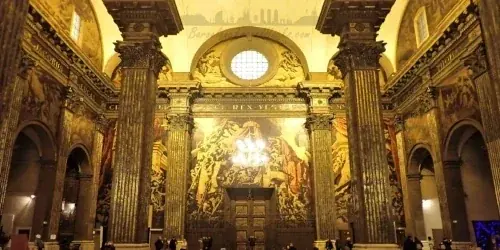 TRAIN
TRAIN
Vic Cathedral: Romanesque & Gothic Landmark in Catalonia
Explore Vic Cathedral’s Romanesque bell tower, Gothic cloister, and Sert murals. A must-see day trip from Barcelona in the heart of historic Vic
Read more >
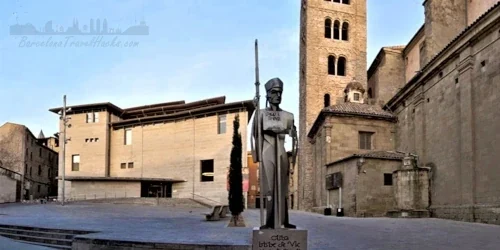 TRAIN
TRAIN
Museu Episcopal de Vic: Medieval Art in Catalonia
Explore 29,000 medieval artefacts at MEV Vic, including Romanesque sculpture, Gothic painting, jewellery, and textiles. A top day trip from Barcelona
Read more >
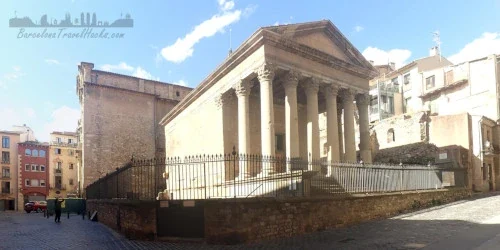 TRAIN
TRAIN
Vic Roman Temple | Best Preserved Roman Site in Catalonia
Explore the best preserved Roman temple in Catalonia. Free entry, art exhibits, and castle ruins. A must-see day trip from Barcelona
Read more >
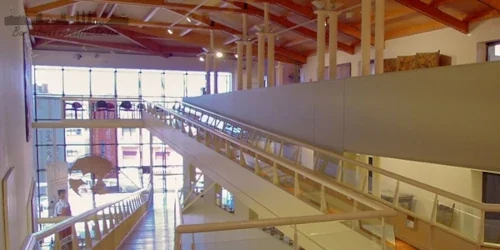 TRAIN
TRAIN